Is your e-commerce business often held back by inaccurate stock data and delays in inventory tracking? These problems will lead to inaccurate stock levels, over stocking or under stocking which results in loss of sales potential.
Collecting and analyzing data effectively is also a significant challenge. Therefore, using a system or software for business management can help you overcome these challenges and stay competitive in the market.
Why is an inventory system so important for an e-commerce business? The e-commerce market in the Philippines is worth $17 billion, largely driven by 73 million active online users. This figure is expected to reach $24 billion, with a 17% growth rate by 2025.
But the question is, are there inventory software options that can help businesses in the Philippines? Absolutely, and HashMicro’s Inventory Management Software is the ideal solution. It offers real-time stock tracking to boost efficiency and reduce errors and is perfectly tailored to fit your business needs.
To help you make the right choice, check out these 20 best inventory management software for e-commerce options to find the best fit for your Philippine business.
Table of Contents

Key Takeaways
|
What is E-Commerce Inventory Management Software?
E-Commerce Inventory Management Solution is a special tool designed to help online businesses manage their inventory effectively. This software provides real-time stock tracking and updates, ensuring businesses have accurate and up-to-date information about their inventory.
Additionally, this software allows businesses to manage multiple warehouses and sales channels smoothly, providing a centralized platform to oversee all inventory-related activities. You can avoid common issues like stockouts and overstocking by implementing a robust inventory management solution.
Several types of inventory management software can be integrated with e-commerce software:
- Just-in-Time (JIT) management: Businesses only order goods when needed to reduce storage costs.
- Bulk shipping: It is suitable for businesses with high sales volume, allowing them to order and ship goods in large quantities for cost efficiency.
- Perpetual and periodic strategies: Perpetual systems continuously update stock in real-time with each transaction, while periodic systems update at specific intervals.
Each strategy has advantages and disadvantages, which can be adjusted to fit the business’s needs. This way, companies can improve customer satisfaction, optimize operational processes, and increase profitability.
Key Features of eCommerce Inventory Management Software
E-commerce inventory management software was created to assist online retailers in monitoring and controlling their stock effectively. Key features of eCommerce inventory management software include:
- Inventory tracking: This feature enables online retailers to monitor stock levels and product availability in real-time, helping to avoid overstock and stock shortages that could harm sales.
- Product categorization: This feature enables retailers to categorize products by attributes like size, colour, style, and more, helping them organize inventory and making it easier to locate specific items.
- Order management: This feature assists retailers in managing orders from various sales channels within a single platform. It enables efficient order processing, quick shipping of products, and automatic updates of order statuses.
- Barcode scanning: This feature enables retailers to scan product barcodes and automatically update their inventory levels. This functionality helps save time and minimizes errors related to manual data entry.
- Integration with sales channels: This feature enables retailers to connect their inventory management software with their eCommerce platforms, marketplaces, and other sales channels. This integration helps synchronize inventory levels across all channels, preventing overselling.
- Reporting and analytics: This feature offers retailers valuable insights into their inventory performance, sales trends, and customer behavior. It assists them in making informed, data-driven decisions regarding inventory management and sales strategies.
The Benefit of E-Commerce Inventory Management Software
Using the right inventory management software for e-commerce is not just an operational improvement; it’s a strategic investment for your business. This software offers various benefits that can change how you manage inventory, streamline operations, and boost overall efficiency.
Here are some benefits you will get:
- Prevent stockouts or overstocking: This software helps businesses avoid stockouts or overstocking issues that can disrupt operations and damage their reputation.
- Increase profitability: By improving efficiency and accuracy in inventory management, businesses can enhance profitability through better inventory turnover.
- Cost savings: Accurate inventory tracking can save your business money on stock purchases and storage costs.
- Accurate and real-time data: Providing accurate and real-time data enables businesses to make better and faster decisions, particularly regarding automated stock updates.
- System integration: This software allows integration with other systems like e-commerce platforms, accounting software, and shipping solutions, creating a more cohesive and efficient operation.
- Optimize operational processes: By automating many manual tasks related to inventory management, this software improves fulfillment speed and optimizes operational processes.
Challenges of Managing E-Commerce Inventory Software
Ecommerce inventory management software is crucial for online retailers to effectively manage their inventory. However, there are various challenges associated with using this type of software.
- The software should be capable of integrating with various sales channels, including marketplaces like Amazon, eBay, and Walmart, as well as social media platforms like Facebook and Instagram. However, complex integrations can be a significant hurdle, making it challenging to synchronize sales and inventory across all platforms.
- The software must be able to manage a substantial number of products, SKUs (stock-keeping units), and variations. This can pose a challenge for certain inventory management systems that may find it difficult to keep pace with the volume of items that require tracking, leading to inaccurate stock information.
- The software must support real-time inventory updates. Online retailers need to monitor their inventory levels in real-time to prevent overselling products or running out of stock. This necessitates a high degree of accuracy and reliability from the inventory management software.
Top 20 E-Commerce Inventory Management Software for Your Business
Proper e-commerce inventory management is key to smoothly managing stock, reducing costs, and increasing efficiency. However, choosing the right one can be challenging with so many software options available.
That’s why we have compiled a list of the 20 best e-commerce inventory management software options to help you optimize your business operations.
1. HashMicro Inventory Management Software for E-commerce
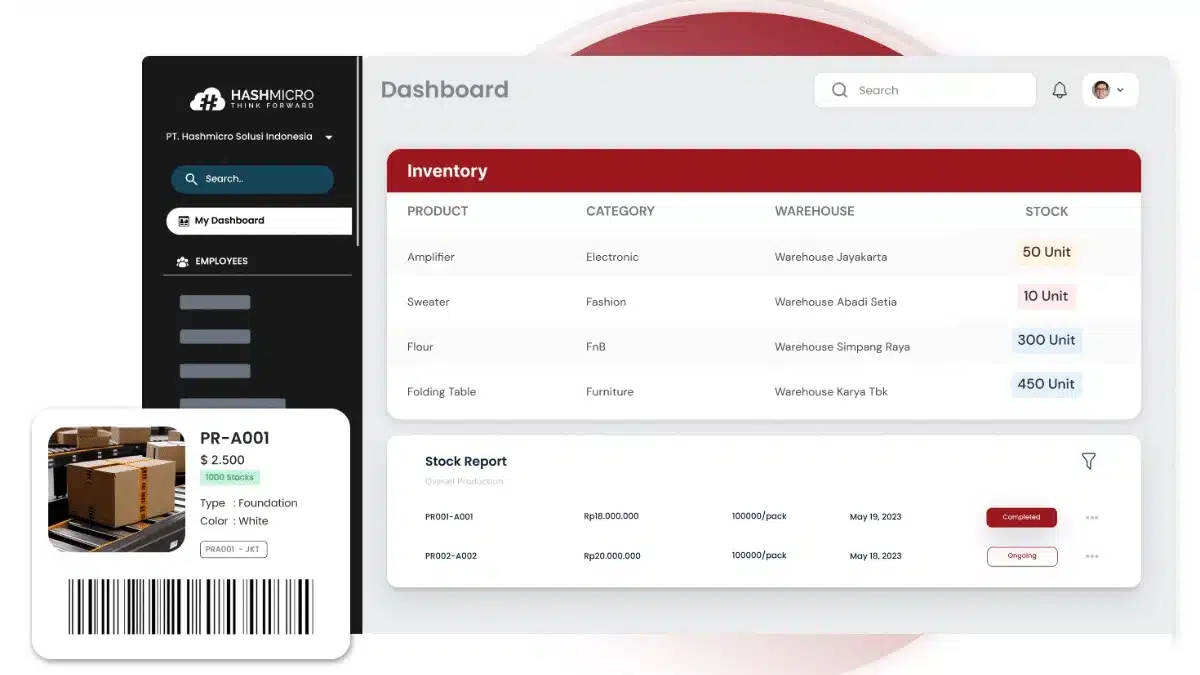
HashMicro is a leading ERP solutions provider in the Philippines. It offers various products to help businesses improve their e-commerce efficiency. HashMicro is known for its flexible, fully integrated systems that meet the needs of businesses in various industries.
With advanced technology and support from expert teams, HashMicro ensures that every implementation runs smoothly and delivers optimal results. The company is also known for its continuous commitment to innovation, which keeps businesses competitive in a dynamic market.
If your business is having trouble managing inventory for various e-commerce channels, HashMicro has the perfect solution. With a free demo and live consultation, you can find the best way to smooth inventory management for your business.
HashMicro E-Commerce Inventory Management Software helps optimize inventory management, reduce the risk of stockouts or overstocking, improve operational efficiency, and ensure accurate data for better and faster decision-making.
This software has comprehensive features such as:
- RFID warehouse rack stock in-out automation: This feature automates tracking stock movements in and out of warehouse racks, improving inventory management efficiency and accuracy.
- OCR for receiving: You can speed up the receiving process and ensure inventory data is always accurate and up-to-date.
- Stock forecasting: With this feature, you can proactively reorder stock, optimize inventory levels, and enhance customer satisfaction.
- Run rate reordering rules: You can forecast product quantities based on market trends, ensuring the warehouse has enough items to meet demand without overstocking or understocking.
- Packaging management: This feature helps in organizing and efficiently storing goods, making inventory tracking easier.
- Fast-moving and slow-moving stock analysis: This feature helps you identify products with high and low turnover rates, allowing for strategic planning such as prioritizing stock procurement, running sales promotions, and clearing out slow-moving items.
- Racking capacity with putaway strategy: This feature assists the warehouse team by providing detailed information on placing items in small locations within the warehouse without remembering them.
- Stock reservations & reporting: You can ensure the availability of desired items and manage inventory more efficiently.
- Stock optimizer per warehouse: This feature maximizes overall warehouse space usage and improves operational efficiency in stock management.
- Pick, Pack, Delivery 3-step route warehousing: You can enhance warehouse operational performance and ensure smooth item delivery with this top-notch feature.
- Consignment management: You can manage stock updates, track sales, and handle payments to consignors effectively.
| Pros | Cons |
|
|
Looking to simplify your online store’s inventory management? Consider exploring HashMicro’s E-Commerce Inventory Management Software. With features like real-time tracking, automated stock updates, and smooth integration with your existing platform, it can help you stay organized and avoid costly mistakes.
If you’re interested in making your inventory process more efficient and less stressful, click the banner below to learn more about how this solution might be a great fit for your business.
2. ClickUp Inventory Management Software for E-commerce
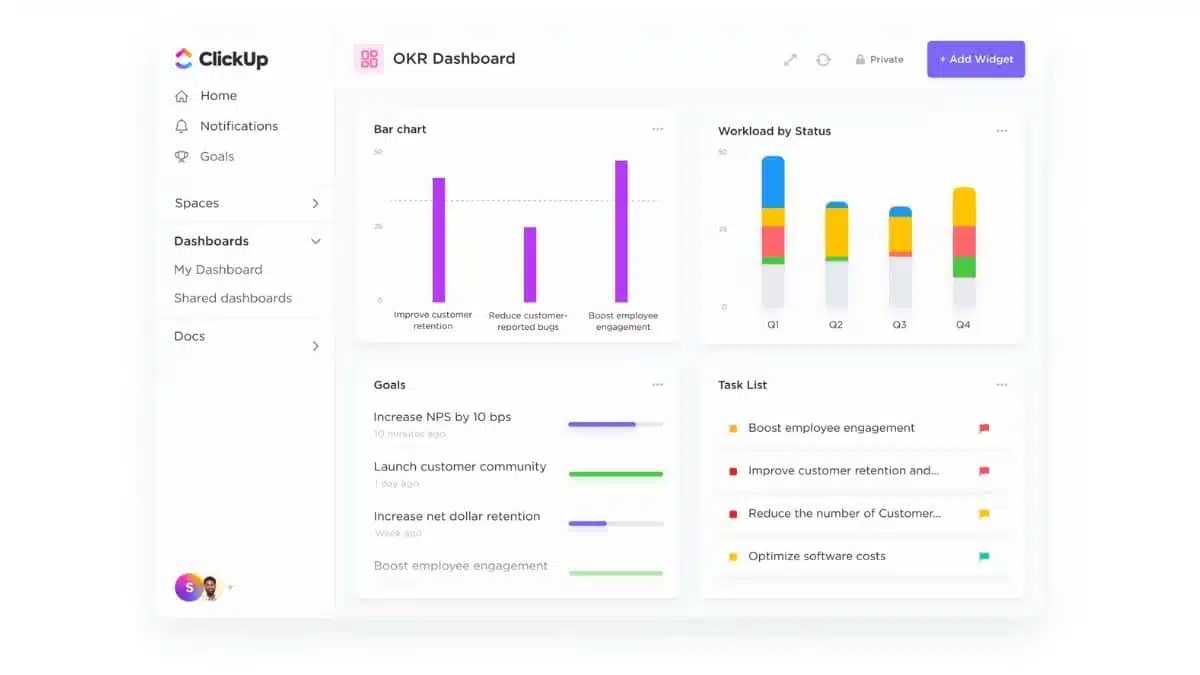
ClickUp is a versatile project management platform that includes features for equipment maintenance. It allows teams to plan, schedule, and monitor maintenance tasks and provides an intuitive dashboard for monitoring equipment performance and status in real-time.
ClickUp inventory management app has the following features:
- ClickUp Views: Board, List, Gantt, Calendar
- ClickUp Automation
- ClickUp AI support
| Pros | Cons |
|
|
3. inFlow Inventory Management App
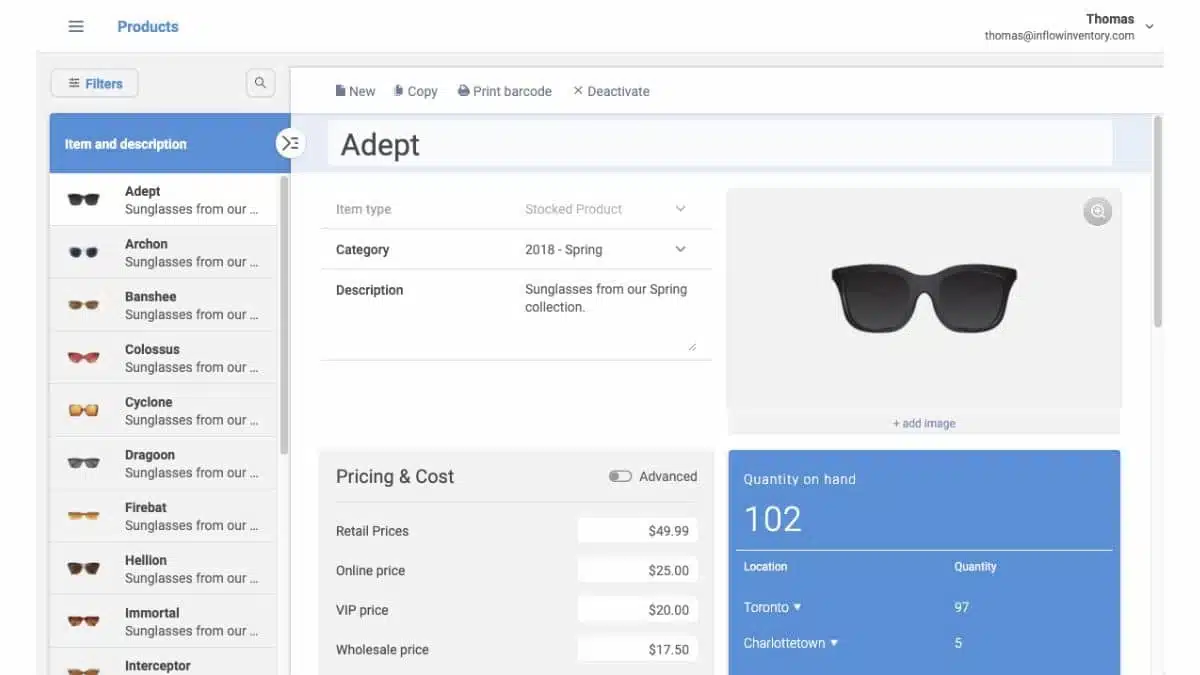
inFlow offers inventory management software that also supports equipment maintenance. With inFlow, users can track equipment conditions, schedule routine maintenance, and monitor usage to ensure operational efficiency and reduce the risk of sudden breakdowns.
Cloud inventory software by inFlow has various features, such as the following:
- Centralized Inventory Database
- Inventory Level Dashboards
- Stock History Reporting
- Inventory Forecasting
| Pros | Cons |
|
|
4. ShipBob E-commerce inventory management software
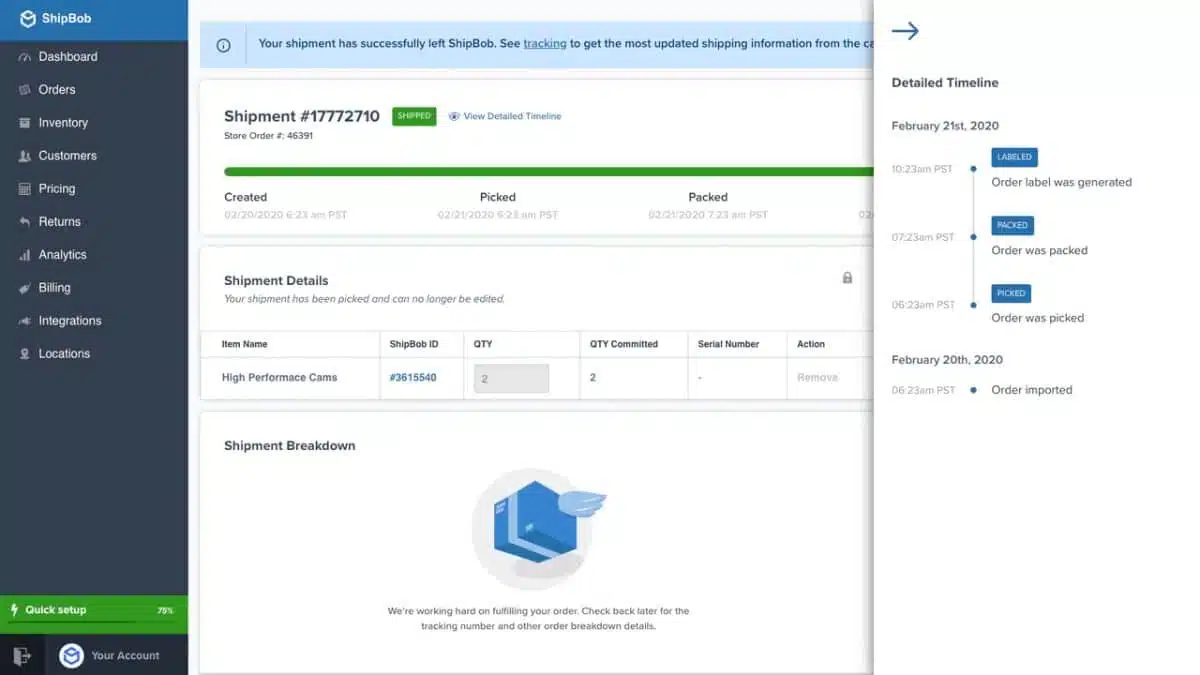
ShipBob is known as a logistics and inventory management platform, but it also supports equipment maintenance needs. The software helps companies manage and schedule maintenance of logistics and warehousing assets, ensuring all equipment is in good working order.
Inventory management software by ShipBop has the following features:
- eCommerce Integrations
- Customer Porta
- KPIs Dashboards
- Custom Reports
| Pros | Cons |
|
|
5. Inventory Management App Veeqo
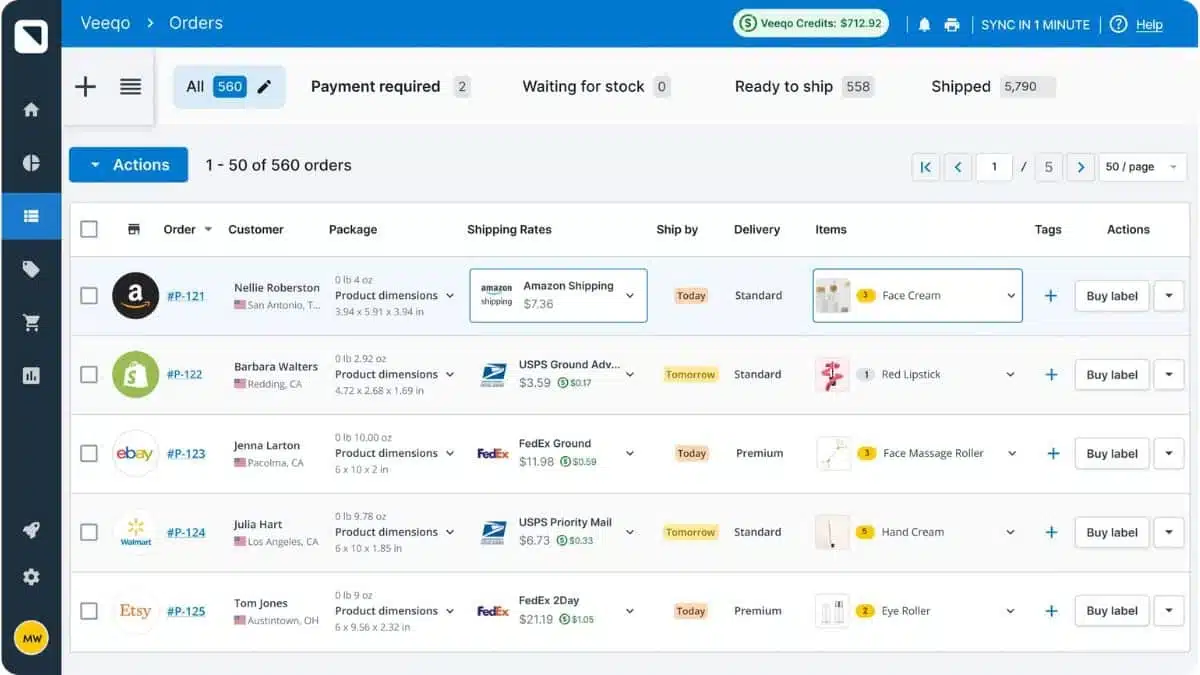
Veeqo is an inventory and order management solution that also offers features for equipment maintenance. With Veeqo, companies can automate maintenance schedules, track equipment conditions, and manage spare parts to ensure smooth and efficient operations.
E-commerce inventory software by Veeqo has features such as the following:
- Centralized Inventory Database
- eCommerce Integrations
- Order management
- Low stock alerts
| Pros | Cons |
|
|
6. Cin7 Stock Management Software
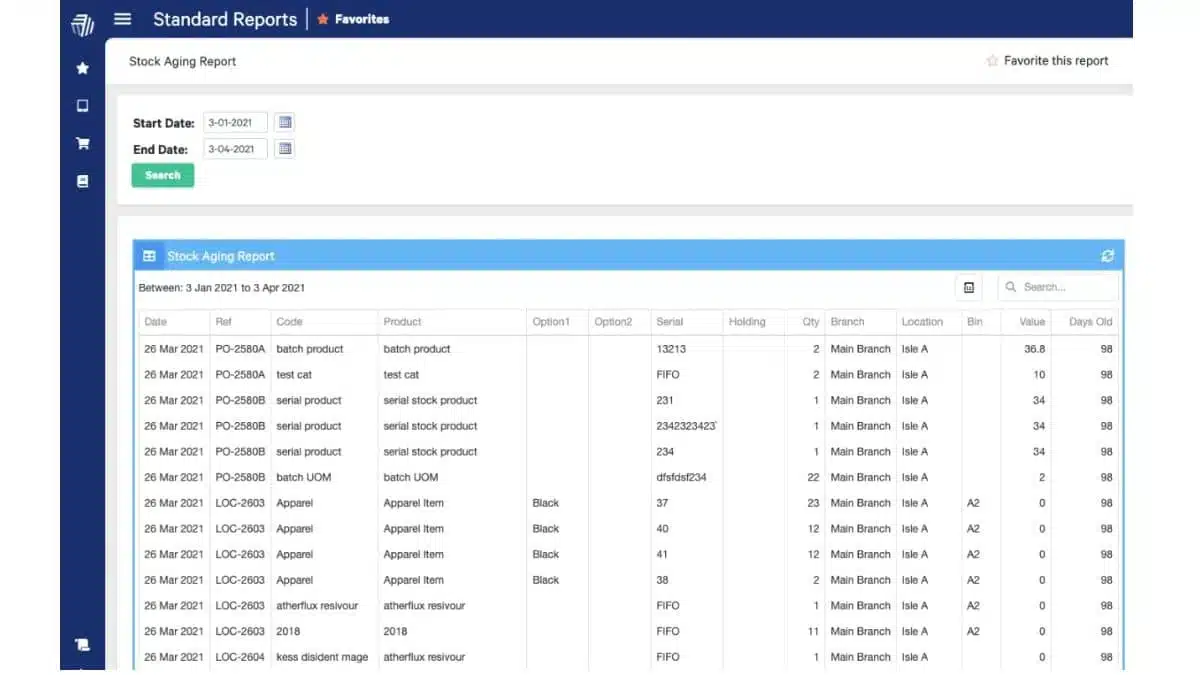
Cin7 is a comprehensive inventory management platform that includes equipment maintenance features. This software allows tracking equipment performance, scheduling maintenance, and managing assets to reduce downtime and improve operational efficiency.
The following are the features of Cin7 stock management software:
- Centralized Inventory Database
- Inventory Level Dashboards
- Stock History Reporting
- Low Stock Notifications
| Pros | Cons |
|
|
7. Fishbowl E-commerce inventory management software
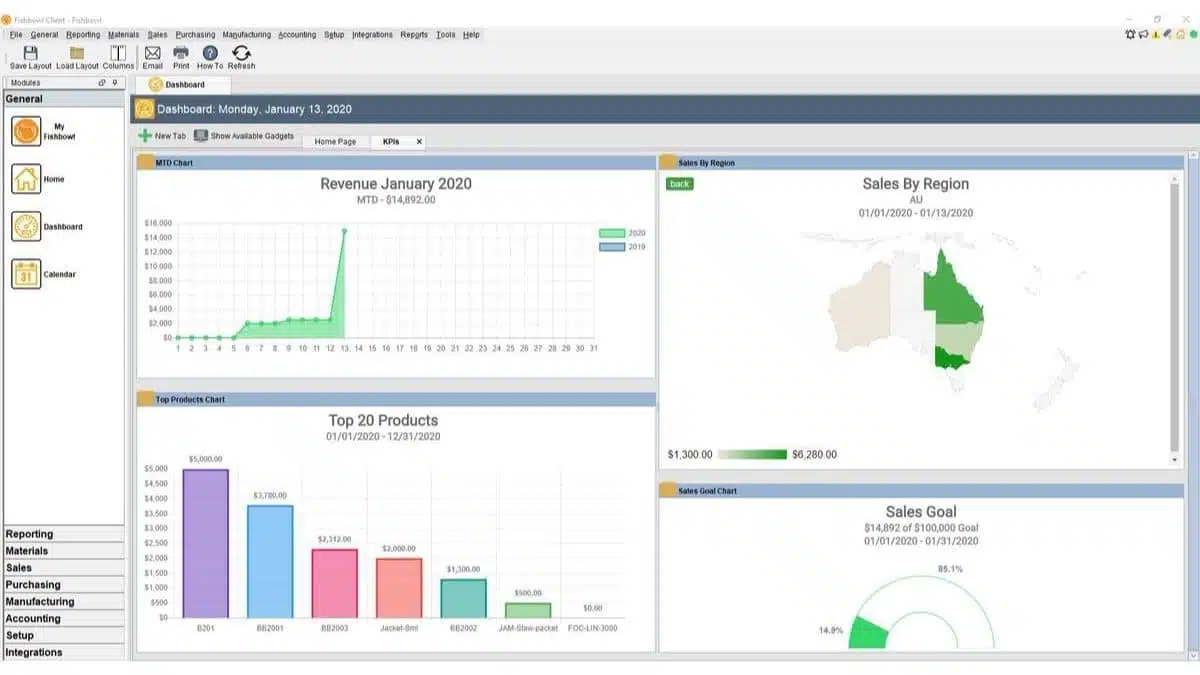
Fishbowl offers both on-premise and cloud-based inventory management solutions for various types of businesses, including eCommerce, brick-and-mortar, and manufacturing. It helps accurately track inventory, customize labels, automate processes, and integrate payments from POS and eCommerce platforms into accounting records.
Here are the features of Fishbowl inventory software:
- Inventory tracking and management
- Order management
- Real-time inventory updates
- Mobile access
| Pros | Cons |
|
|
8. E-commerce Inventory Management Software Helcim
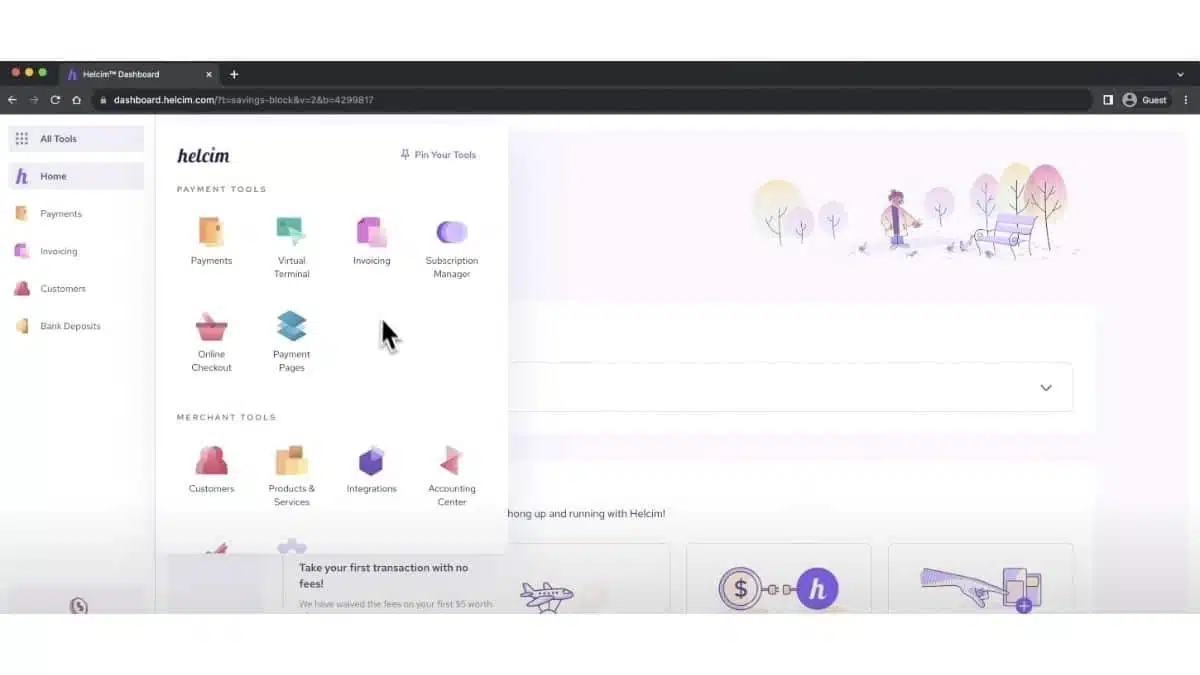
Helcim is a payment and business management platform that also supports equipment maintenance. Known primarily for payment solutions, Helcim helps in managing business equipment, including scheduling and tracking maintenance.
Helcim inventory management application has the following features:
- Payment processing
- Inventory tracking
- Customer relationship management (CRM)
- Reporting and analytics
| Pros | Cons |
|
|
9. Sage Inventory Advisor
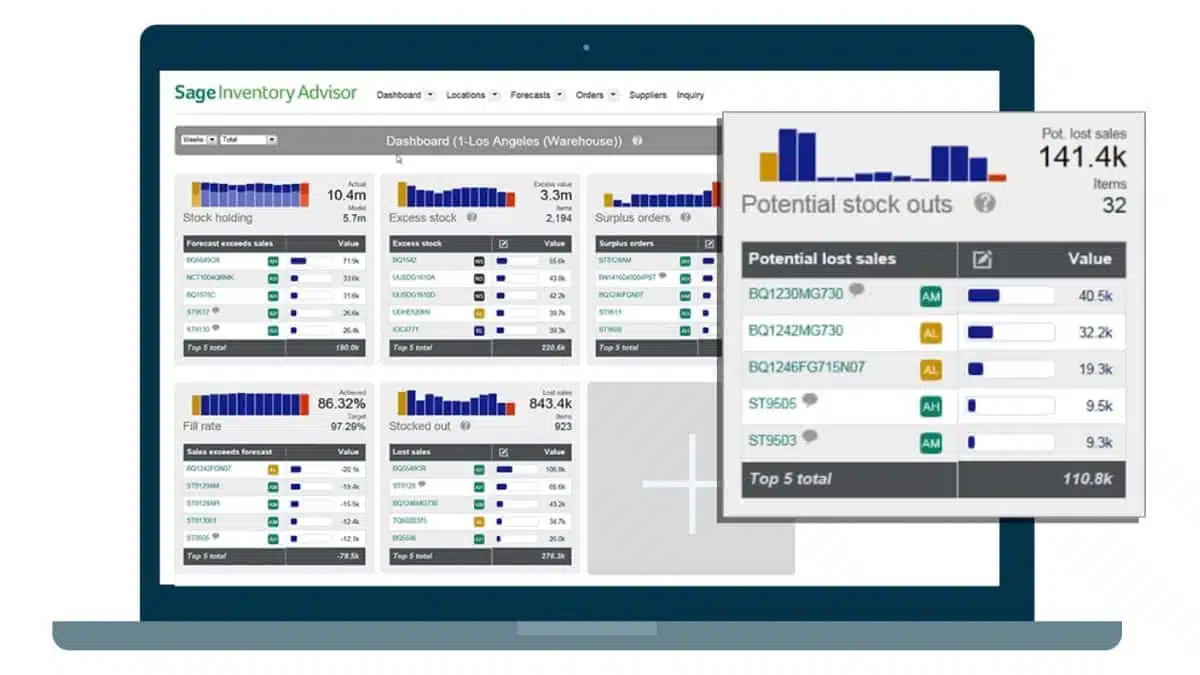
Sage Inventory Advisor offers inventory management solutions with equipment maintenance features. With Sage, users can manage maintenance schedules, monitor asset conditions, and optimize equipment usage for maximum efficiency.
The following are the features of Sage Inventory Advisor:
- Inventory optimization
- Demand forecasting
- Supplier management
- Real-time stock tracking
| Pros | Cons |
|
|
10. Netsuite Inventory Management
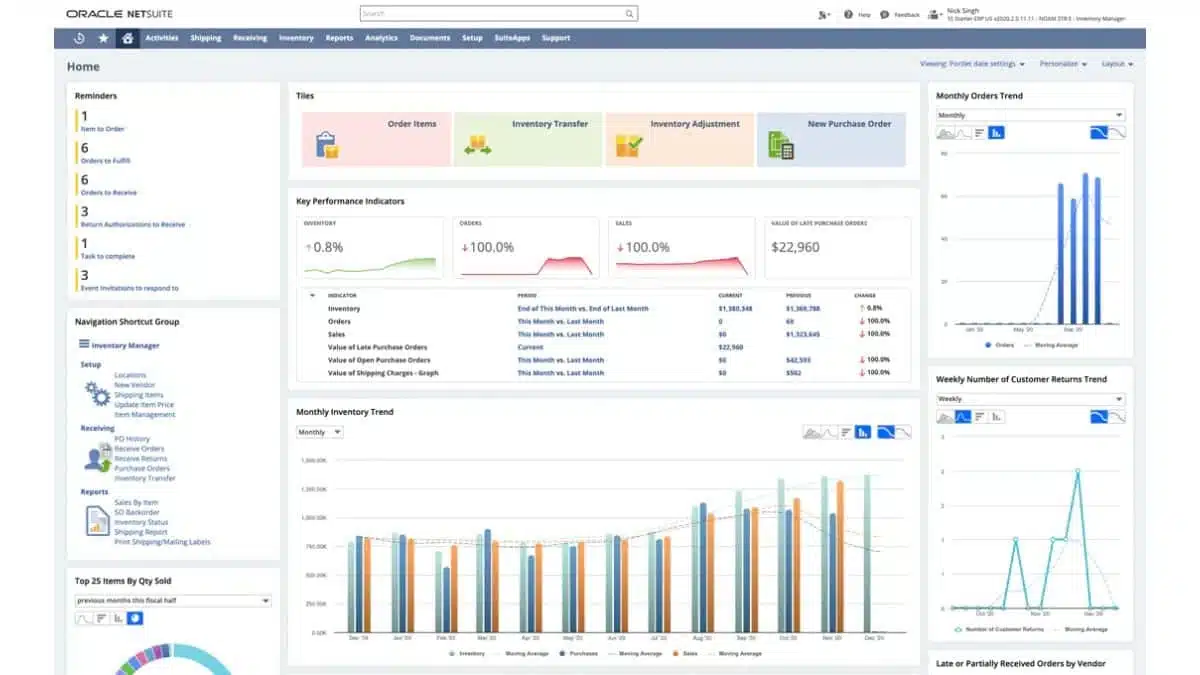
Netsuite Inventory Management is part of the Netsuite ERP suite, which offers equipment maintenance features. This software helps with asset tracking, maintenance scheduling, and performance analysis to ensure equipment is always in top condition.
Here are the features of Netsuite inventory management software:
- Inventory control and optimization
- Order fulfillment
- Demand planning
- Multi-location management
| Pros | Cons |
|
|
11. Zoho Inventory Management App
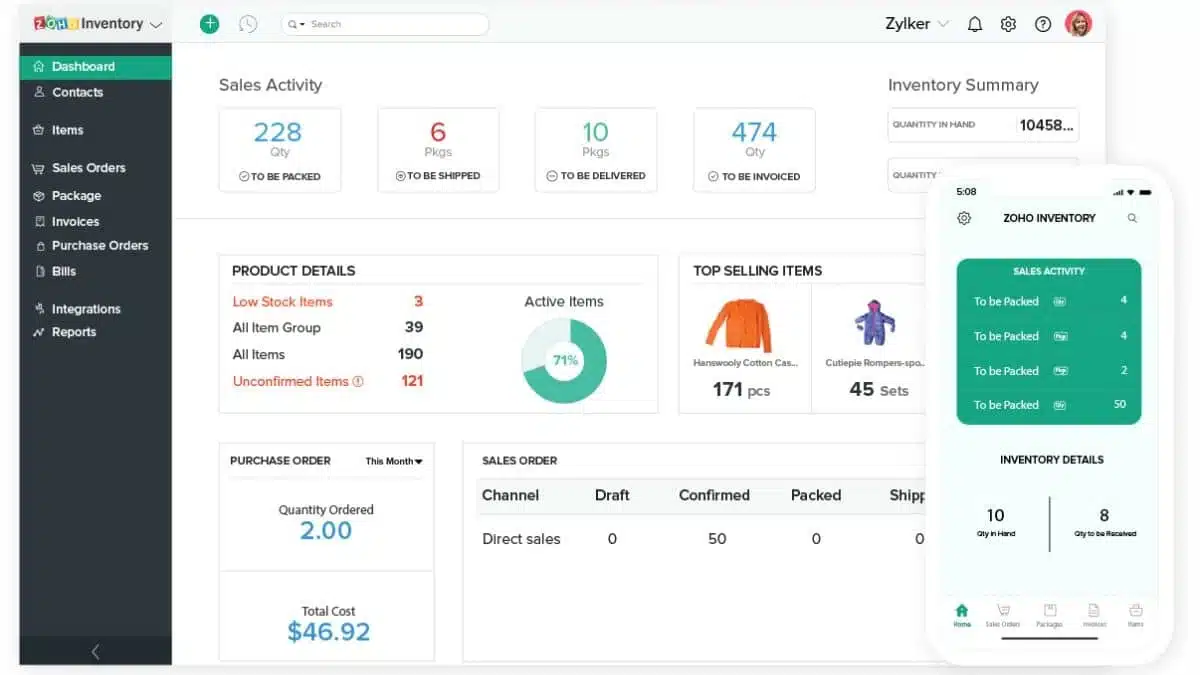
Zoho Inventory is an inventory management solution integrated with equipment maintenance features. With Zoho, users can schedule maintenance, track equipment conditions, and ensure smooth operations through preventive maintenance.
E-commerce inventory software by Zoho has features such as the following:
- Multi-channel inventory management
- Order management
- Warehouse management
- Integrations with various e-commerce platforms
| Pros | Cons |
|
|
12. Linnworks E-commerce inventory management software
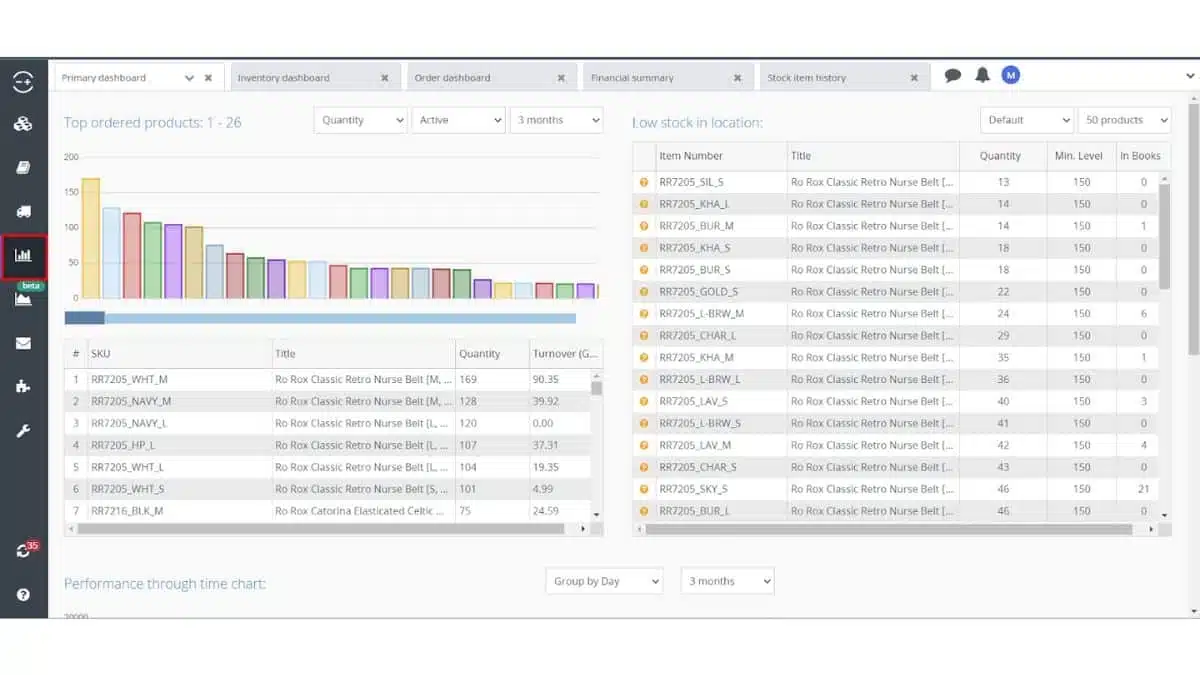
Linnworks is an e-commerce and inventory management platform that supports equipment maintenance. This software allows maintenance scheduling, tracking equipment conditions, and managing spare parts to reduce downtime.
The following are the features of Linnworks inventory:
- Multi-channel order management
- Inventory control
- Automation tools
- Reporting and analytics
| Pros | Cons |
|
|
13. Lightspeed Inventory Management App
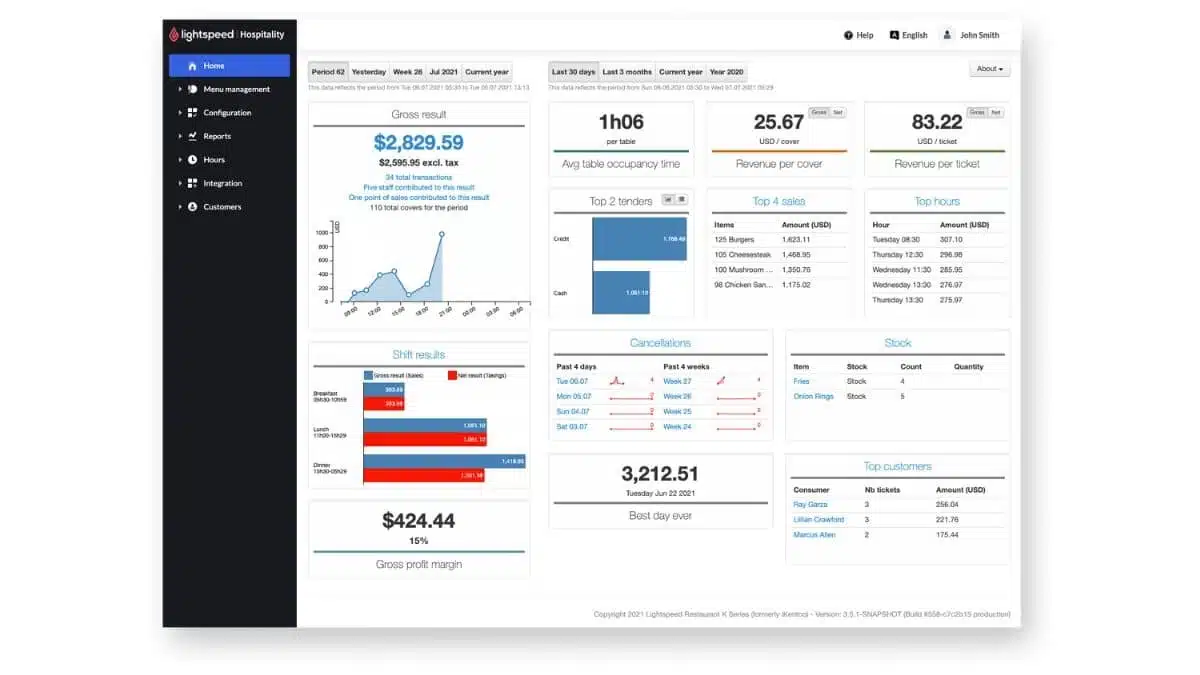
Lightspeed is a POS and inventory management solution that includes equipment maintenance features. This software helps retailers manage asset maintenance, schedule services, and ensure equipment is always ready to use.
Lightspeed e-commerce management software has the following features:
- POS integration
- Real-time inventory tracking
- Asset maintenance scheduling
- Comprehensive reporting tools
| Pros | Cons |
|
|
14. Threecolts Inventory App
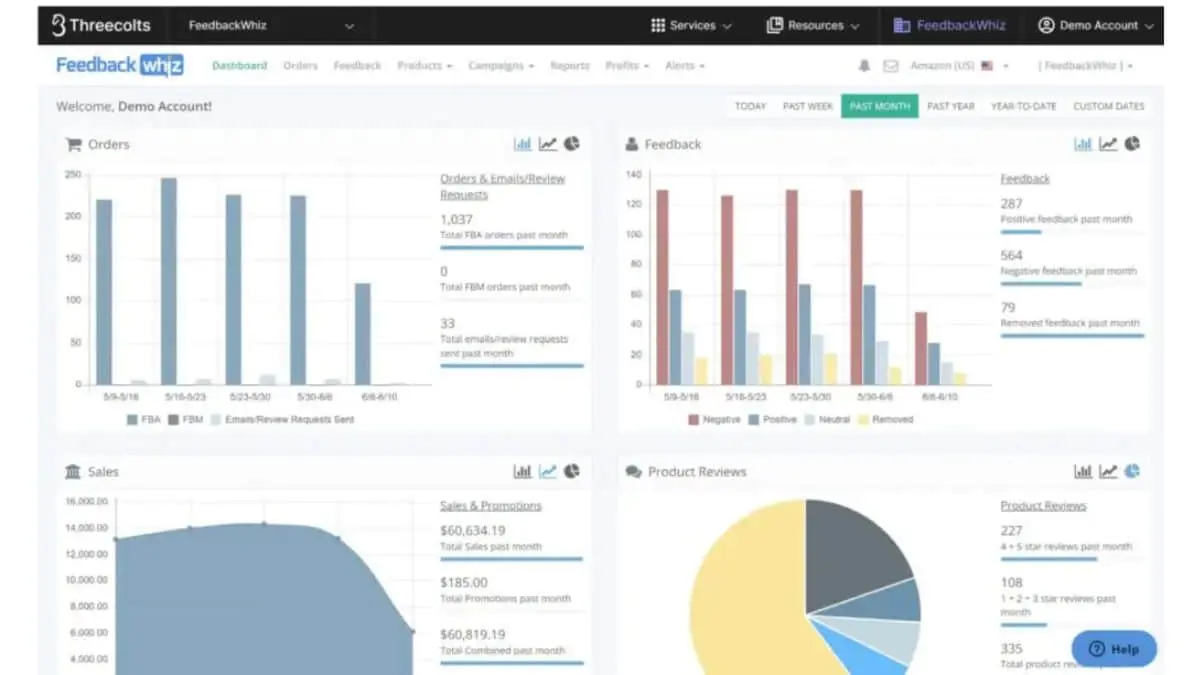
Threecolts is an inventory and order management platform for equipment maintenance. Users can schedule maintenance, track equipment performance, and easily manage spare parts with Threecolts.
Here are the features of the Threecolts inventory app:
- Inventory management
- Order tracking
- Maintenance scheduling
- Spare parts management
| Pros | Cons |
|
|
15. Inventory Management App Trunk
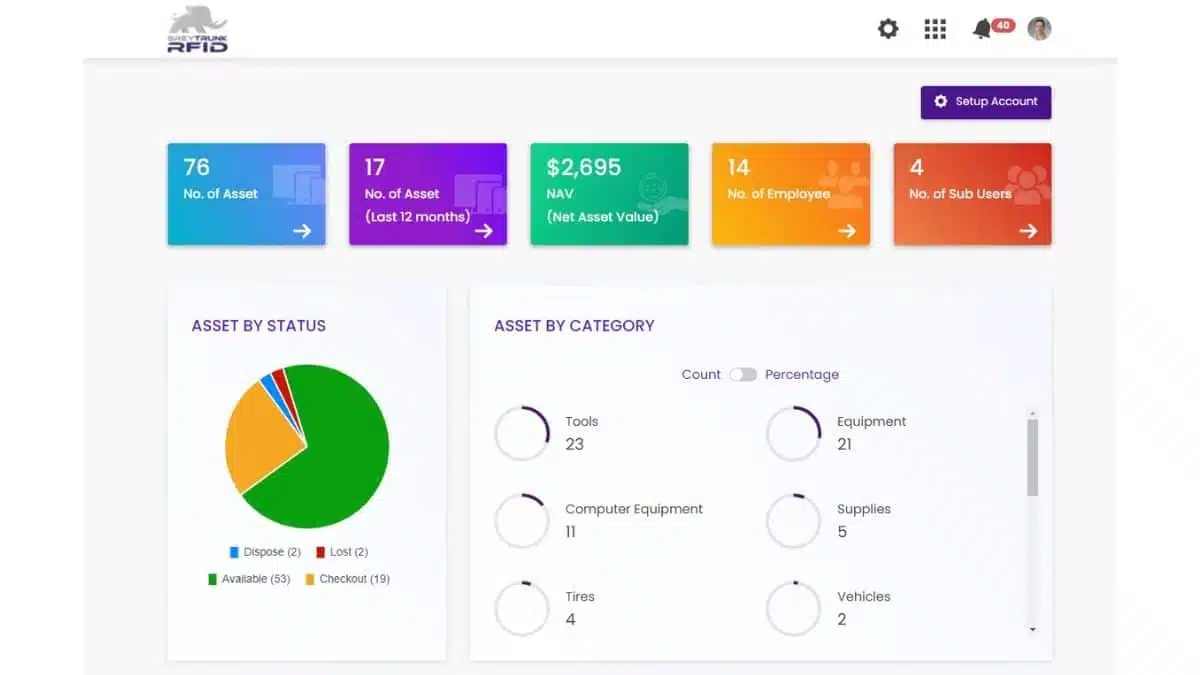
Trunk provides an integrated inventory management solution with equipment maintenance features. This software helps businesses schedule maintenance, track asset conditions, and ensure all equipment functions optimally.
Inventory Management App Trunk has features such as the following:
- Real-time inventory sync
- Multi-channel support
- Maintenance scheduling
- Asset condition tracking
| Pros | Cons |
|
|
16. SkuVault Ecommerce Inventory Management Software
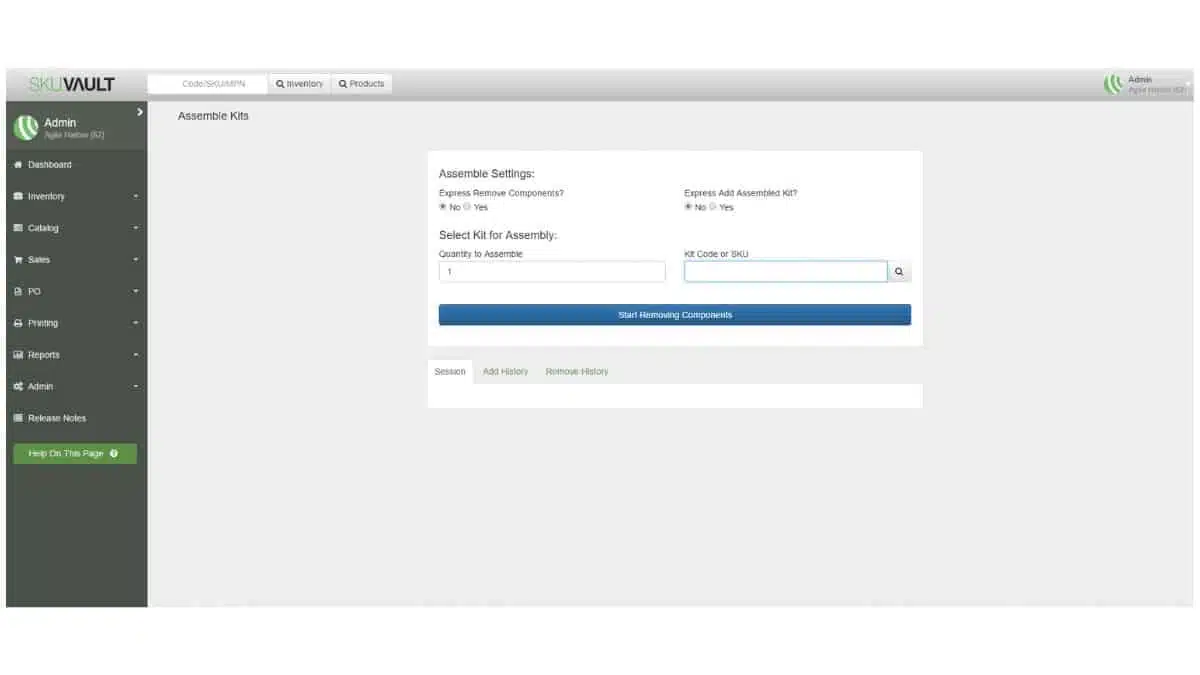
SkuVault is an inventory management solution that offers equipment maintenance features. Users can manage maintenance schedules, monitor equipment conditions, and reduce the risk of breakdowns through preventive maintenance.
Here are the features of SkuVault inventory management software:
- Inventory tracking
- Order management
- Preventive maintenance scheduling
- Equipment condition monitoring
| Pros | Cons |
|
|
17. Finale Inventory
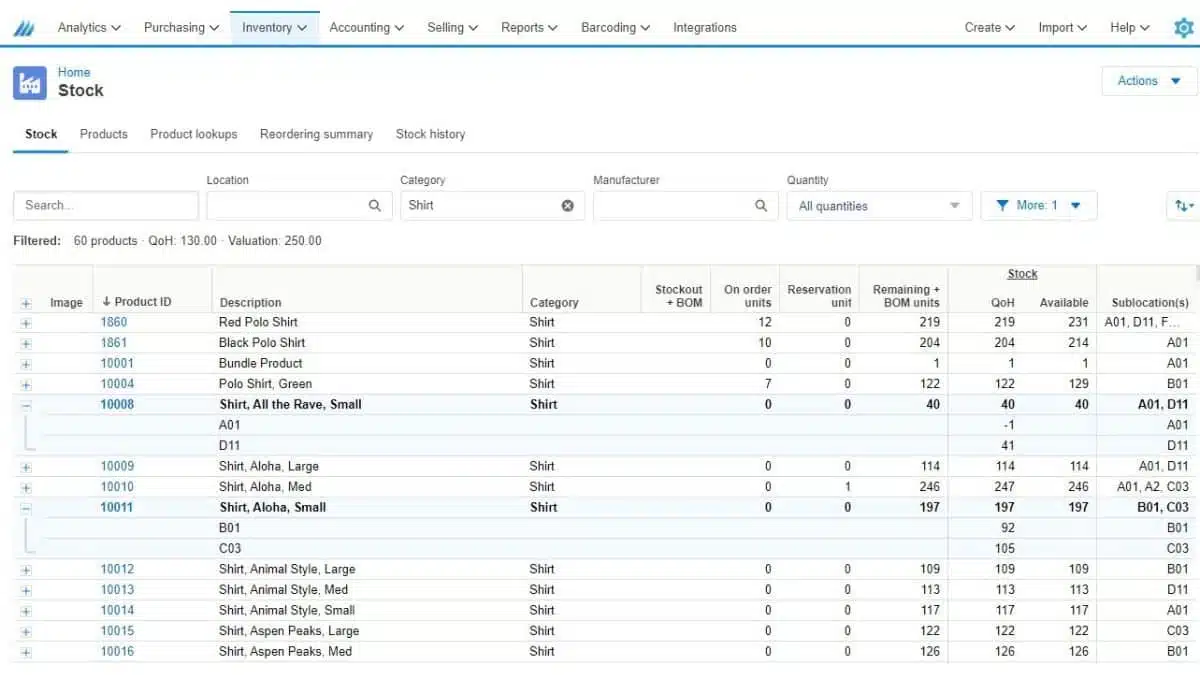
Finale Inventory offers an inventory management solution with support for equipment maintenance. This software enables tracking equipment performance, scheduling maintenance, and managing spare parts for efficient operations.
Finale E-commerce Inventory Software has the following features:
- Inventory control
- Order management
- Barcode scanning
- Equipment performance tracking
| Pros | Cons |
|
|
18. Sellercloud E-commerce inventory management software
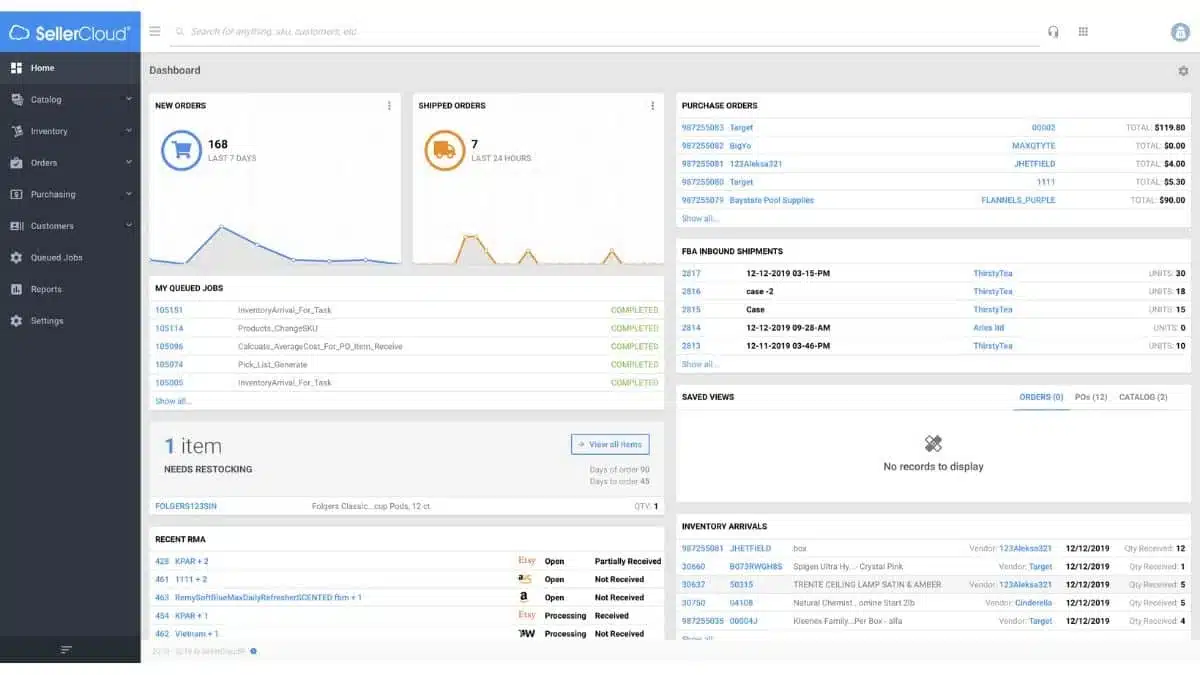
Sellercloud is an e-commerce management platform with equipment maintenance features. Users can schedule maintenance, track equipment conditions, and ensure all assets are in good condition.
Inventory management software by Sellercloud has the following features:
- Multi-channel management
- Inventory control
- Order processing
- Equipment maintenance scheduling
| Pros | Cons |
|
|
19. Inventory Management Software for Ecommerce Katana
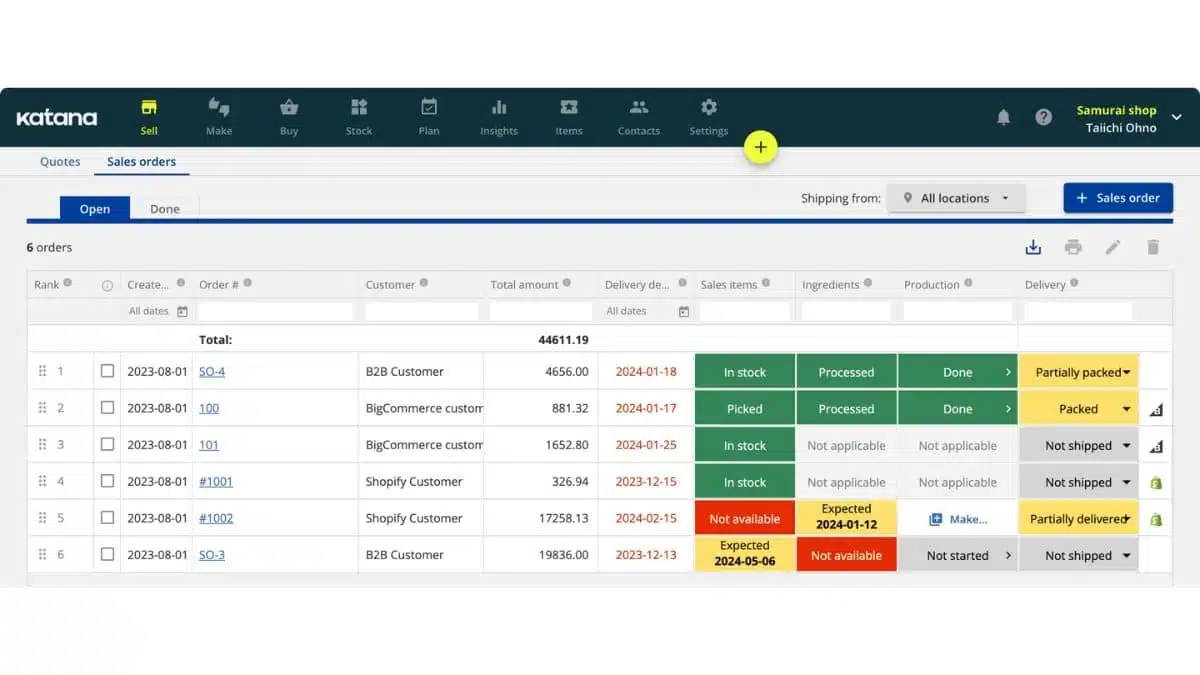
Katana is designed for small manufacturing businesses and those selling online, making it suitable for e-commerce as well. It offers real-time product visibility, end-to-end traceability, features like purchase, sales order, production, and warehouse management, as well as real-time scheduling and master planning capabilities.
Here are the features of Katana inventory management software for ecommerce:
- Production planning
- Inventory management
- Shop floor control
- Asset maintenance management
| Pros | Cons |
|
|
20. Shiphero Ecommerce Inventory Management Software
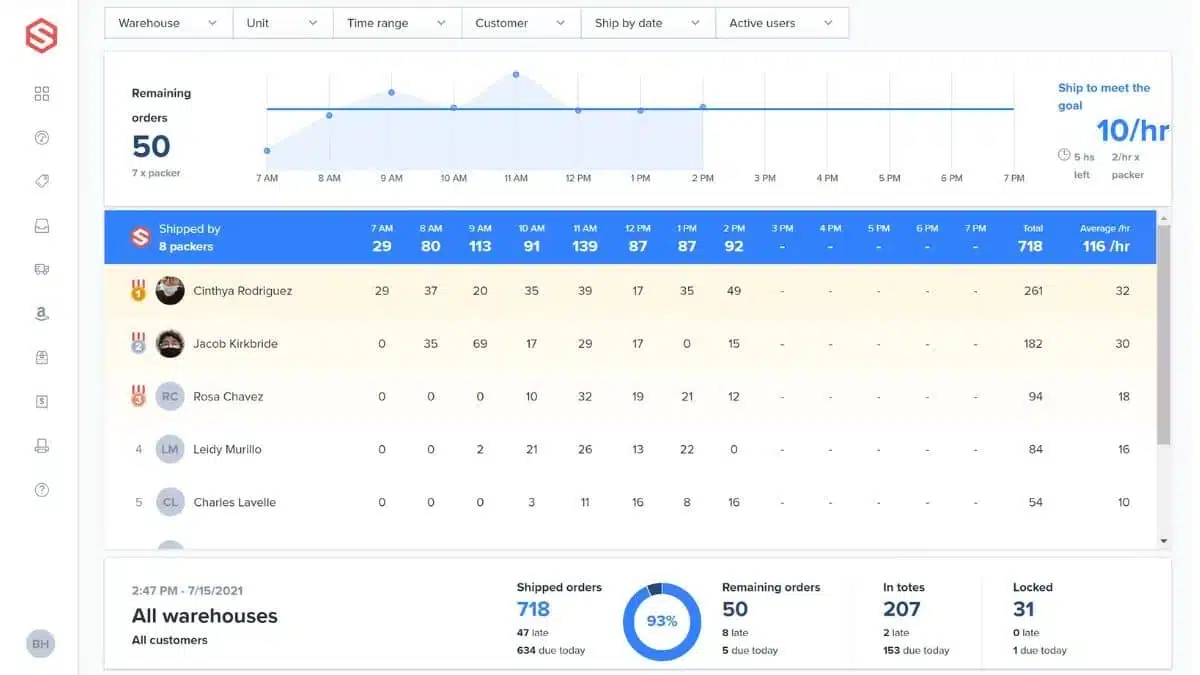
Shiphero is a logistics management platform that offers equipment maintenance features. This software helps companies manage and schedule the maintenance of logistical assets, ensuring all equipment functions well and efficiently.
Shiphero inventory stock software has the following features:
- Shipping management
- Inventory tracking
- Order fulfillment
- Logistics asset maintenance
| Pros | Cons |
|
|
Key Factors to Consider Before Choosing E-Commerce Inventory Management Software
Choosing the right e-commerce inventory management software is a crucial decision that can significantly impact the efficiency and success of your business. Here are some key factors to consider before making a decision:
- Extensive integration with various modules and systems: Ensure the software you choose can integrate with your e-commerce platform and other systems you already use, such as ERP, CRM, or accounting software. Good integration ensures a smooth workflow and consistent data across all systems.
- Real-time stock management features: Software that provides real-time stock tracking helps you avoid overstocking and stockouts and gives better visibility of your inventory.
- Multi-channel support: If your business operates across various sales channels (e.g., marketplace, online store, physical store), ensure the software supports inventory management for all these channels centrally.
- Cost and ROI: Evaluate the total cost of ownership (TCO) of the software, including licensing, implementation, training, and maintenance costs. Also, consider the potential return on investment (ROI) through improved operational efficiency and cost savings.
- Data security: Ensure the software has strong security measures to protect your business and customer data. These measures include data encryption, access controls, and disaster recovery.
- Reporting and analytics: Good software should offer comprehensive reporting and analytics features. The ability to analyze sales data, stock trends, and product performance aids in strategic decision-making.
By considering these factors, you can make a more informed decision and choose the e-commerce inventory management software that best fits your business needs and goals.
Conclusion
Choosing the right inventory management software is essential to support the complex operations of businesses in the Philippines. The software must address various needs and challenges in inventory management and ensure smooth operations.
Investing in the right inventory management software can be a crucial factor in achieving long-term success. One of the best options in the Philippines is HashMicro Inventory Management Software, which offers comprehensive features and many advantages.
HashMicro excels with its customizable features and integration capabilities to meet the specific needs of every business, whether small or large. With HashMicro software, companies can improve operational efficiency, optimize stock management, and ensure higher customer satisfaction.
Schedule a consultation and a free demo with our professional team to discover how HashMicro E-Commerce Inventory Management Software is the right solution for your business!

FAQ About E-Commerce Inventory Management Software
-
-
-
How does ecommerce affect inventory management?
E-commerce significantly affects inventory management by increasing the complexity and volume of inventory that needs to be managed. The rapid pace of online sales requires businesses to maintain accurate and real-time inventory data to prevent stockouts and overstock situations.
Additionally, e-commerce platforms often necessitate integration with various sales channels and fulfillment centers, making it essential for businesses to have a robust inventory management system that can handle multi-channel operations, optimize stock levels, and streamline order processing to meet customer expectations promptly.
-
How to manage inventory in e-commerce?
To effectively manage inventory in e-commerce, use inventory management software to track stock levels in real-time and integrate it with your e-commerce platform. Update inventory data regularly to reflect sales, returns and new stock arrivals.
Apply demand forecasting to anticipate sales trends and adjust stock levels accordingly. Seamlessly manage multiple warehouses and establish strong relationships with suppliers for reliable restocking. Just-in-time inventory can minimise storage costs. Regular audits and clear processes for order fulfilment and returns ensure smooth and accurate operations.
-
What is the role of inventory management in e-commerce supply chain?
E-commerce inventory management software helps businesses manage their stock better by keeping optimal levels, reducing storage costs, speeding up order processing, and improving demand predictions. It also lowers the risk of running out of stock, builds stronger supplier relationships, supports just-in-time inventory, and boosts overall accuracy and efficiency.
-
-




































